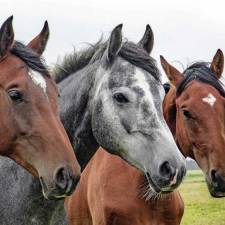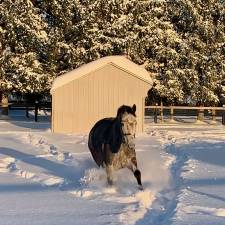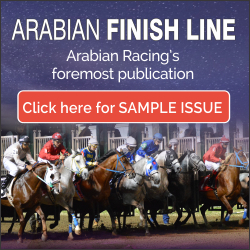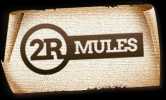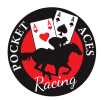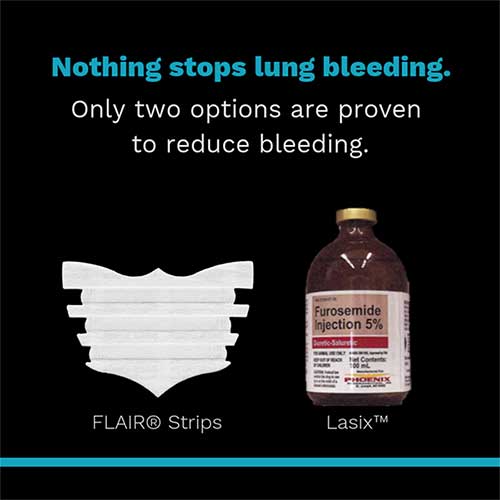
What is a Bleeder?
To most people a “bleeder” is a horse that has blood at the nostrils during or after training or racing.
All Horses are Bleeders!
However, research has shown that if horses are ‘scoped (the process of placing a thin tube with a camera inside the windpipe) after galloping or racing, between 40-80% of horses will have some blood visible in the windpipe, but not at the nostrils. That is, you would not know the horse had bled unless you ‘scoped it. If you ‘scope any horse on three different occasions after galloping it will have blood in the windpipe on at least one occasion. If we look even deeper into the lung we know that all horses break blood vessels.
Horses Do Not Have to Gallop to Bleed.
Research in Japan showed that horses that only cantered at speeds of up to 20 mph (a very slow canter for a racehorse) all had damage to their lungs as a result of broken blood vessels
Damage to the Lung Increases with Speed.
The faster a horse gallops, the more damage done to the lung. The more times a horse gallops, the more damage is done. Other factors can also increase how much damage is done to the lung, such as extremes of going (very hard and very soft) and weight carried – the higher the weight, the worse the bleeding.
Damage to the Lung "Increases Throughout a Horse's Career.
Each time a horse does more than a slow canter, some blood vessels in the lung are broken. At first this damage only affects a small area at the top back part of the lung. With repeated cantering, galloping and racing, the damage does not stay in one place but accumulates and moves further towards the head, affecting more and more of the lung. Thus, the severity and frequency of bleeding observed by ‘scoping after exercise or racing almost always increases with age.
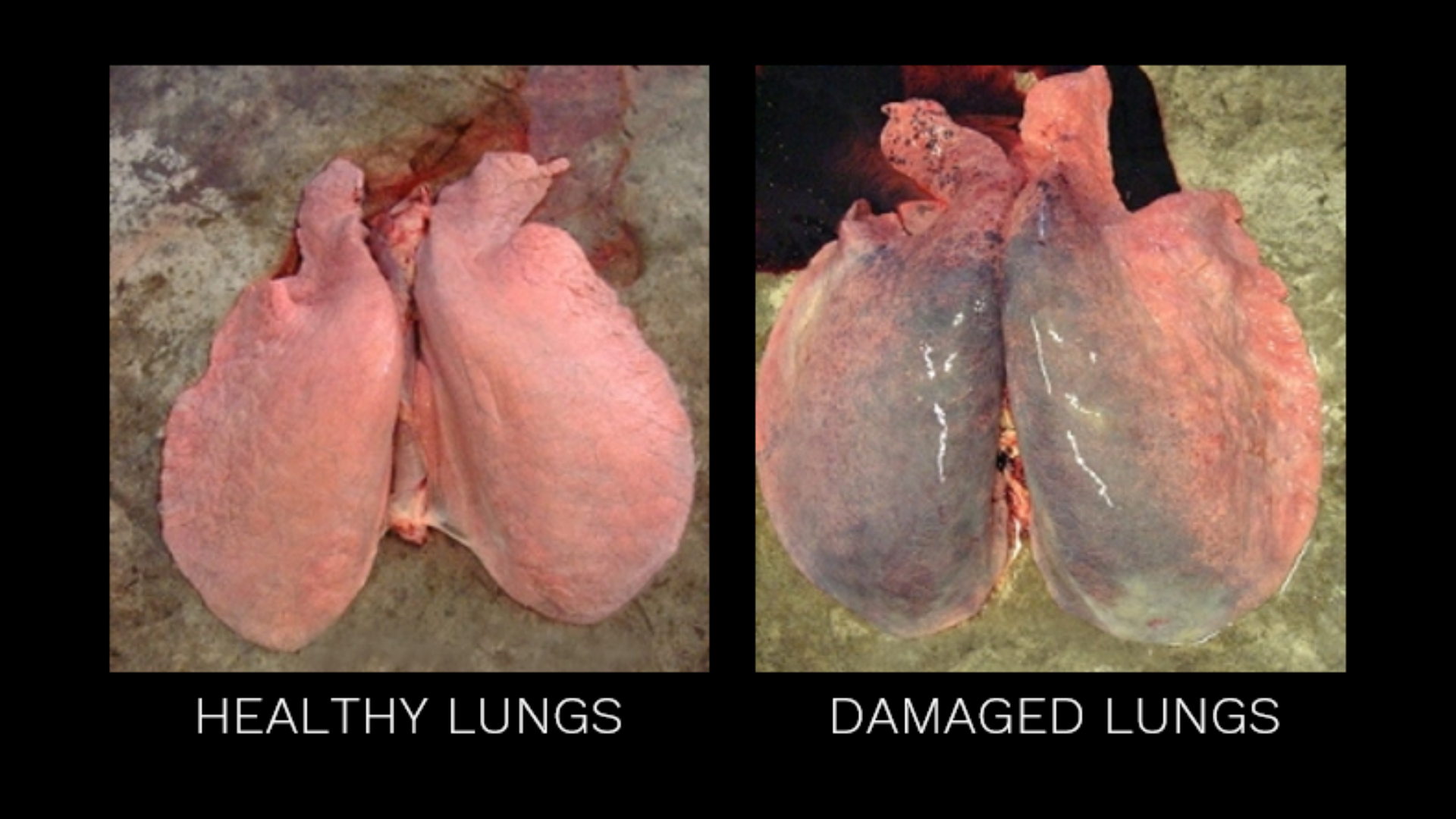
What Does Bleeding Do to the Lung?
The blood vessels that break in the lung are almost always the blood vessels of the pulmonary circulation. This is the venous (deoxygenated) blood circulation that comes from the heart and flows through the lung to collect more oxygen. When the vessels are ruptured, they may become blocked or not function normally. If they are repaired, they may also become stiffer as scar tissue is not as flexible as normal healthy lung tissue. As might be expected, damaged lung tissue, even if it is repaired, does not function as well and so the horse’s lung capacity and lung function are reduced. As the lung is a limiting factor for performance in racehorses, even small losses of function can have a significant adverse effect on performance.
What are the Options for Treating Bleeders?
There are only two proven treatments: Furosemide (Salix, formerly Lasix) and FLAIR® Nasal Strips. Furosemide is a powerful drug which is effective in reducing bleeding by around ~75% the first time it is used. However, there is evidence that shows that Furosemide is less effective if it is used repeatedly. In addition, to really reduce the damage to the lungs from exercise, the drug would need to be given 4 times a week for most racehorse training programmes.
FLAIR Nasal Strips have been shown to be equally as effective as furosemide in reducing the severity of bleeding during intensive training or racing. In addition, because the FLAIR Strip is a mechanical device, it will be equally as effective every time it is used and could be used on every fast exercise day.
Is there a benefit to using FLAIR® Nasal Strips during training if they will not be used during a race?
YES.
- Damage to the lung occurs with every fast piece of work.
- The damage accumulates over time the more a horse canters and gallops.
- The more damage is done to the lung the greater its function is reduced, adversely affecting performance.
- Even if you don’t race with FLAIR Nasal Strips, it makes sense to use them in training to limit how much damage occurs to the lungs so that they are in the best condition possible when it matters……in the race.
- FLAIR Strips are much less expensive than a dose of Lasix and equally effective in reducing bleeding.
Find FLAIR® Nasal Strips in our sections on Thoroughbred Racing, Veterinarians. and Health & Education.








